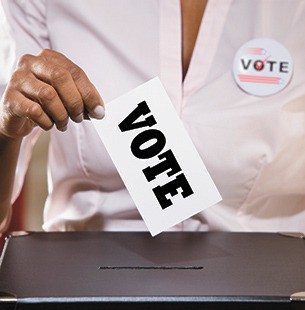As presidential politics continue to dominate the national scene, local activists are gearing up to make their voices heard.
In Washington, being an active and involved voter – no matter where one’s political preference sits – isn’t as simple as seen throughout the land. The Evergreen State hosts a presidential primary election, though it’s so late in the campaign season that some view it as irrelevant; and, making the process even more convoluted, Democrats do not rely on the primary as their sole decision-making tool. Instead, Democrats will use the caucus/convention process to allocate all of the state’s national convention delegates.
The statewide political machinations contribute to the process of selecting candidates from the two dominant political parties who will be on the presidential ballot in November.
The caucus
The Washington State Republican Party conducted its caucuses Feb. 20.
In all corners of the state, Democrats will gather from 10 a.m. to noon on Saturday, March 26. Meeting places are traditionally in schools, community halls and places of worship, but can be in individual homes.
Because the state’s Democratic Party does not recognize the primary election, the March 26 caucuses will be the only way party loyalists can throw their support to Hillary Clinton or Bernie Sanders.
Caucus results will determine the number of delegates each candidate carries to the legislative district level. The number of delegates allotted for each precinct was pre-determined by the number of voters in the last election.
Democrats interested in attending a local caucus have a couple of options for finding the appropriate location. Information can be found on the Washington Secretary of State website (www.sos.wa.gov/elections) or the state party’s website (www.wa-democrats.org). Entering a home address and ZIP Code is sufficient.
The primary election
While the primary holds no official importance to Democrats, Republicans use the mail-in primary election ballot to choose the state’s GOP favorite.
The Washington primary is set for May 24, meaning ballots will be sent during the first week of the month. To cast a primary ballot, voters have to declare a party preference. That continues to be a point of contention but, as Secretary of State Kim Wyman explains, “the parties have a First Amendment right of association that limits access to their nominating process to their self-identified members.”
Voters will receive a single ballot including candidates in both parties, but must declare a party preference and vote for a candidate within that party.
According to a Wyman press release, both Clinton and Sanders will be on the Democratic ballot. Initially, five names were submitted on the Republican side – but the list has been reduced to Donald Trump, Ted Cruz, Marco Rubio and John Kasich, now that Ben Carson has dropped from the race.
Washington’s primary has been a hot topic in political circles and Wyman attempted to move the primary date to March 8. That would have given state voters more visibility on the national scene and provided a more timely reason for candidates to visit the state. Setting an earlier primary was blocked, however, and the default date of May 24 was accepted.


